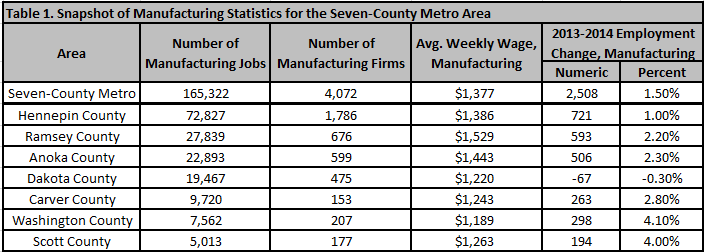 The Minneapolis-St. Paul metropolitan area is a national leader in finance, advanced manufacturing, agriculture and retailing.
The Minneapolis-St. Paul metropolitan area is a national leader in finance, advanced manufacturing, agriculture and retailing.
Medical devices, electronics and processed foods are strong suits recognized globally.
Want the freshest data delivered by email? Subscribe to our regional newsletters.
8/17/2015 2:23:55 PM
Tim O'Neill
The Department of Employment and Economic Development's (DEED) most recent Employment Review publication highlighted manufacturing in the Twin Cities metropolitan area. Some key takeaways:
We can break up the data for a much more complete picture of manufacturing in the Twin Cities. For job seekers, employers, government agencies, students, and others interested in learning about manufacturing in the region, there are a number of resources that provide a detailed picture:
There are several resources and tools beyond those listed above. Unemployment Insurance Statistics, County Business Patterns, and Nonemployer Statistics are just a few of these resources. Check out future blogs to learn more about these resources and how they can be used to better understand the Twin Cities labor market.

Contact Tim O'Neill at 651-259-7401.